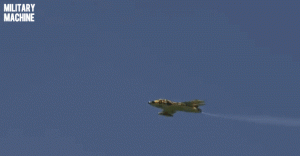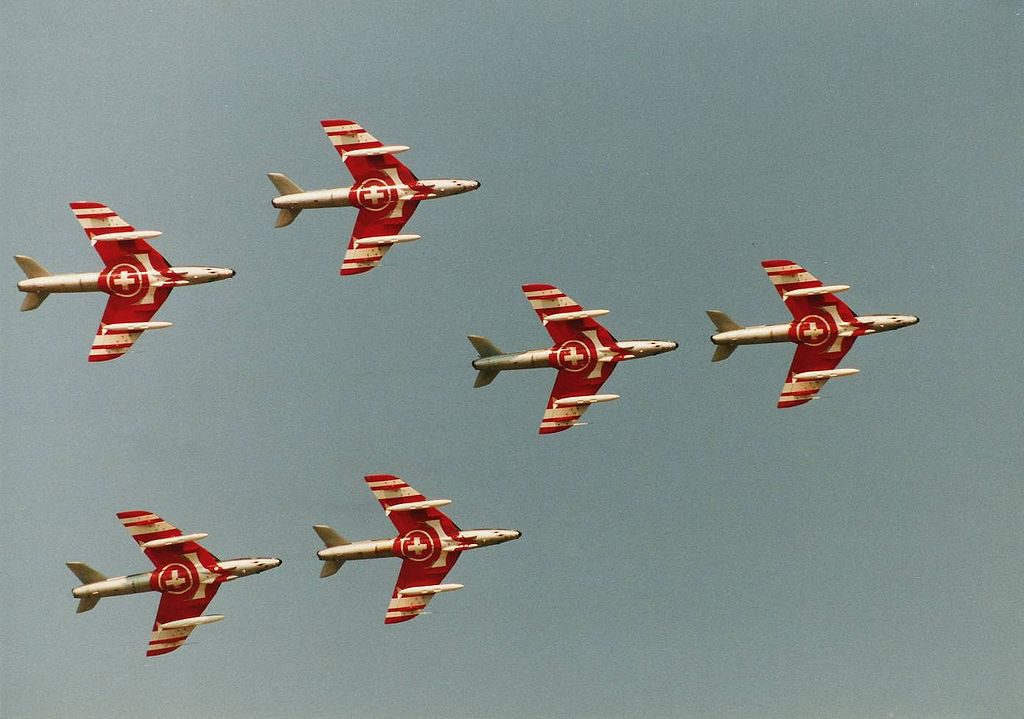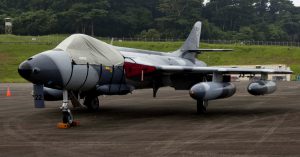The Hawker Hunter British Fighter Jet
Before the Hurricane and the Harrier, Sir Sydney Camm of the United Kingdom drew up plans for perhaps one of the most versatile British fighter jets to date: the Hawker Hunter. Initially produced in 1956, the Hawker Hunter arrived in time to counter Soviet bloc aggression across Western Europe. The Hawker Hunter was a transonic single engine aircraft and the first to achieve British Royal Air Force fleet dominance with an estimated 2,000 entered into service.
Speed:
A transonic jet is one that approaches the speed of sound but does not cross it. This ended up making the Hawker Hunter an ideal candidate for not just air superiority missions but jet bomber and close air support missions as well. While the Hawker’s time as an air superiority fighter against conventional and advanced adversaries would be extremely limited, it worked wonders in close air support missions in Brunei in 1962.

Advancements:
The Hawker Hunter would undergo many revisions during its long tenure in the British Royal Air Force. From Mark I to eventually Mark 10, the aircraft would be revised dutifully to fulfill the requirements of the RAF. Major advancements included a new ejection seat for the pilot and trainer. Another novel addition was two blister packs located beneath the cockpit. This innovation kept the four 30 mm (1.18 in) ADEN revolver cannons from dumping spent shells into the jet intake.
 Design:
Design:
Like contemporary jet fighters produced across the pond, the Hawker featured a swept wing design. This design proved to be aerodynamically friendly to transonic flight. While American and Russian designed fighter jets prioritized speed and strategic bomber interception, the British appeared to be more focused on a sleek, modern jet fighter that would project Imperial power to the farthest edges of the earth.
With the added capability of using external tanks, the Hawker Hunter proved to be a valuable asset in patrolling the vast coastline of Great Britain and Western Europe.

This aircraft proved to be so popular that over a dozen foreign air forces purchased their own. It was so rugged and easy to maintain that the last Hawker Hunter only recently went out of service from the Lebanese Air Force. A private company, Hawker Hunter Air, maintains a small fleet of Hawker Hunters for scientific and private contract purposes. These aircraft serve as excellent trainers for entry and intermediate level dogfighting.
Weaponry:
In addition to four 30mm revolver cannons, the Hawker Hunter could also carry rockets and missiles. Both air-to-air Sidewinders and air-to-surface Mavericks were fitted to the Hawker Hunter depending upon the mission.

Civilian Friendly:
Since leaving military service, a select number of Hawker Hunters are available on the civilian market. Civilians, with the proper authorization, may purchase a used Hawker Hunter for private contract purposes. The cockpit offers excellent visibility for dogfighting or stunt maneuvers and it has an excellent safety record in the air.
For both intermediate civilian jet pilots and former Western European fighter pilots, the Hawker Hunter is perhaps one of the most beloved of the first generation of British jets.
See Hawker Hunter Specifications
| Engine: F.6 uses a single Rolls-Royce Avon 207 turbojet, earlier versions used a Sapphire variant |
| Thrust: 10,145 lb-ft (45.13 kN) |
| Height: 13 feet 2 inches (4.01 m) |
| Length: 45 feet 11 inches (14.00 m) |
| Wingspan: 33 feet 8 inches (10.26 m) |
| Empty Weight: 14,122 lbs. (6,405 kg) |
| Max. Takeoff Weight: 24,600 lbs. (11,158 kg) |
| Maximum Speed: 715 mph (620 kn, 1,150 km/h, Mach 0.94) at sea level |
| Ferry Range: 1,650 nmi (1,900 mi, 3,060 km) with external fuel |
| Service Ceiling: 50,000 feet (15,240 m) |
| Crew: One; Two for trainers |

